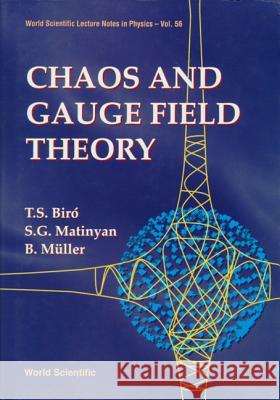Chaos and Gauge Field Theory » książka
Chaos and Gauge Field Theory
ISBN-13: 9789810220792 / Angielski / Twarda / 1995 / 300 str.
This text introduces a rapidly growing new research area - the study of dynamical properties of elementary fields. The methods used in this field range from algebraic topology to parallel computer programming. The main aim of this research is to understand the behaviour of elementary particles and fields under extreme circumstances, first of all at high temperature and energy density generated in the largest accelerators of the world and supposed to be present in the early evolution of our universe shortly after the Big Bang. In particular, chaos is rediscovered in a new appearance in these studies: in gauge theories the well-known divergence of initially adjacent phase space trajectories leads over into a quasi-thermal distribution of energy with a saturated average distance of different field configurations. This particular behaviour is due to the compactness of the gauge group. Generally this book is divided into two main parts: the first part mainly deals with the "classical" discovery of chaos in gauge field theory while the second part presents methods and research achievements in recent years. One chapter is devoted entirely to the presentation and discussion of computational problems. The major theme, recurring throughout the book, is of course the phenomenon with a thousand faces - chaos itself. This book is intended to be of use as a research book introducing the reader to a new research field, presenting the basic new ideas in detail but just briefly touching on the problems of other related fields, such as perturbative or lattice gauge theory or dissipative chaos.











